Porsche Cayman Top Speed
► New Cayman GT4 driven
► Still naturally-aspirated 6cyl
► A sublime sports car!
The original Porsche Cayman GT4 was the perfect Goldilocks' ratio of just-rightness: easy to pick up at first, but puzzling and rewarding to master, in an agile package that somehow managed to balance immense capability and grip with a raw and involving feel.
It was so good, in fact, that getting hold of one during its limited run was perhaps the most challenging part of the story. Porsche really had no choice but to bring it back in 718 form.
Happily, unlike the standard Cayman which has been strangled by downsized four-cylinder boxer engines, this GT4 borrows a more powerful engine from the latest 911, which means – for this model at least – six-cylinder Caymans are back on the menu. Get ready for some hyperbole.
Don't tell me the GT4's got a turbo...
No turbo! Just more of the good stuff – cylinders, displacement and capacity for revs. It'd be a bit simplistic to say this is simply a bored and stroked 911 unit, because this 4.0-litre flat-six shares few parts with the 3.0-litre upon which it's based, despite being manufactured on the same factory line.
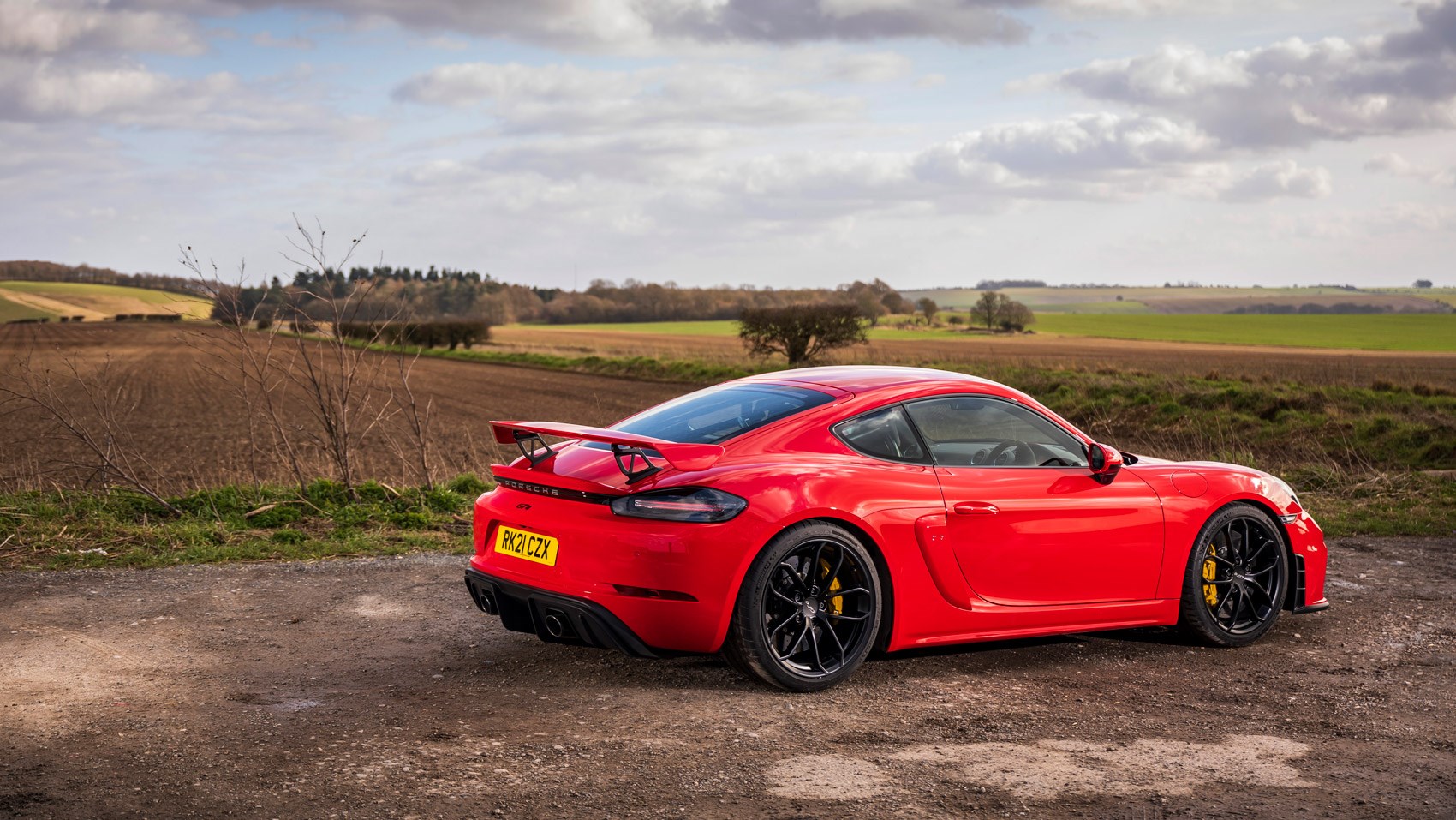
It delivers the right numbers, too: 414bhp means it is 35bhp more powerful than the last GT4, and 310lb ft of torque is available across a broader spread, making it feel suitably more flexible. There's a real hunger for revs right up to the 8000rpm redline, with a notable step up in power at 4000rpm that encourages you to keep reaching. Expect 0-62mph in 4.4 seconds and a top speed of 187mph flat-out.
To keep up with constantly shifting emissions regulations, the Cayman now features active cylinder shutdown and a pair of particulate filters, so that six-cylinder sound isn't entirely unfiltered. Porsche promises 25.7 mpg and 249 g/km CO2, which is reasonably inoffensive for a sports car this focused.
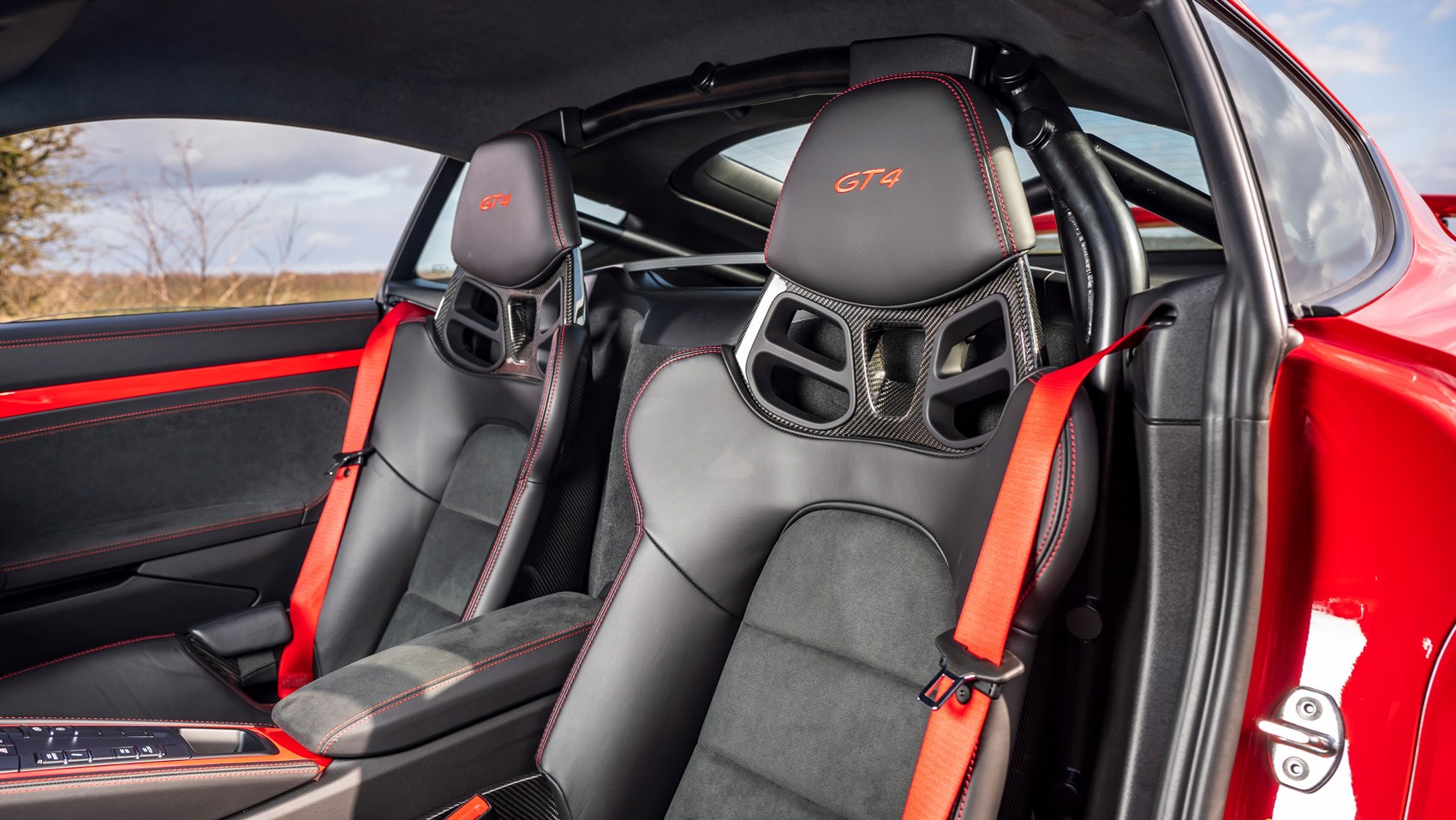
This GT4 is a little heavier than the previous model, because these days all cars have to be homologated for emissions testing without options - such as the weight saving carbon bucket seats and brakes that customers will doubtless add. In addition to the particulate filters, a larger battery and starter motor add to the kerbweight too, but in all honestly, you won't notice.
What else is new on the latest GT4?
Quite a bit more downforce – 50% more, in fact, due to a more efficient rear wing and front apron, plus a fully-panelled underbody and a working rear diffuser. What difference does this make? Well, while we didn't exactly notice the GT4 being sucked into the tarmac, it did feel suitably planted. Plus Porsche says that this model is 12 seconds faster around the Nurburgring than the old one, three seconds of which are down to the new aero package. Not a huge difference over such a long lap, but a tangible one nonetheless.
Technically the chassis isn't all that different to the old car's – it still features some GT3 bits on the front end, and sits 30mm lower than the standard Cayman. You can get your spanners out to adjust the ride height, toe, camber and anti-roll bars if you think you can do a better job than Porsche, plus adaptive dampers with two modes to choose from are standard-fit. The softer mode allows much greater feedback into how hard you're pushing the car, while the stiffer setting brings considerably more poise and composure, meaning the car handles very flatly indeed.
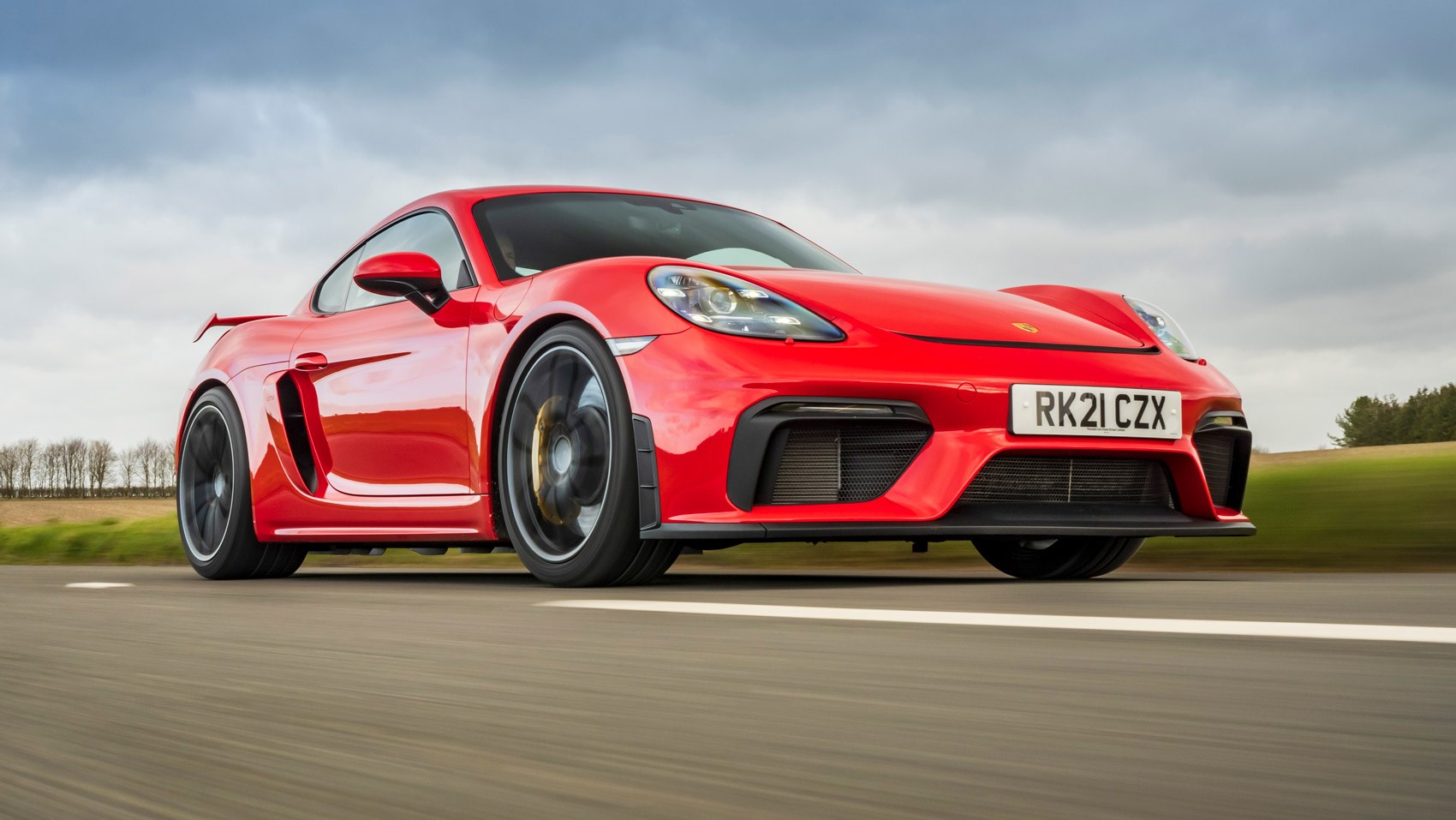
Either way, the Porsche 718 Cayman GT4's limits are transparent, and the way it turns into a corner is incredible. While the last car could sometimes feel a bit sketchy at the limit, this version feels almost elastic in its ability to ping back into shape after heavy-handed inputs or over-ambitious entry speeds.
Helping in this regard is a mechanical limited-slip differential and torque vectoring with traction and stability control, that can be turned off in two stages. You've got sort-of off and very off. Although Porsche says you won't be any slower with it on, and that tallies with our experience. This, like the rest of the car, it feels like it's working with you, rather than messing with your enjoyment of the 718 Cayman GT4.
Hauling the GT4 to a stop are a set of beefy aluminium monobloc brake callipers with normal discs, or carbon ceramic rotors as an option. The latter resist fade as well as you'd expect and require a firm push to unlock their full potential, meaning plenty of modulation at the top of the pedal.
What's it like to drive?
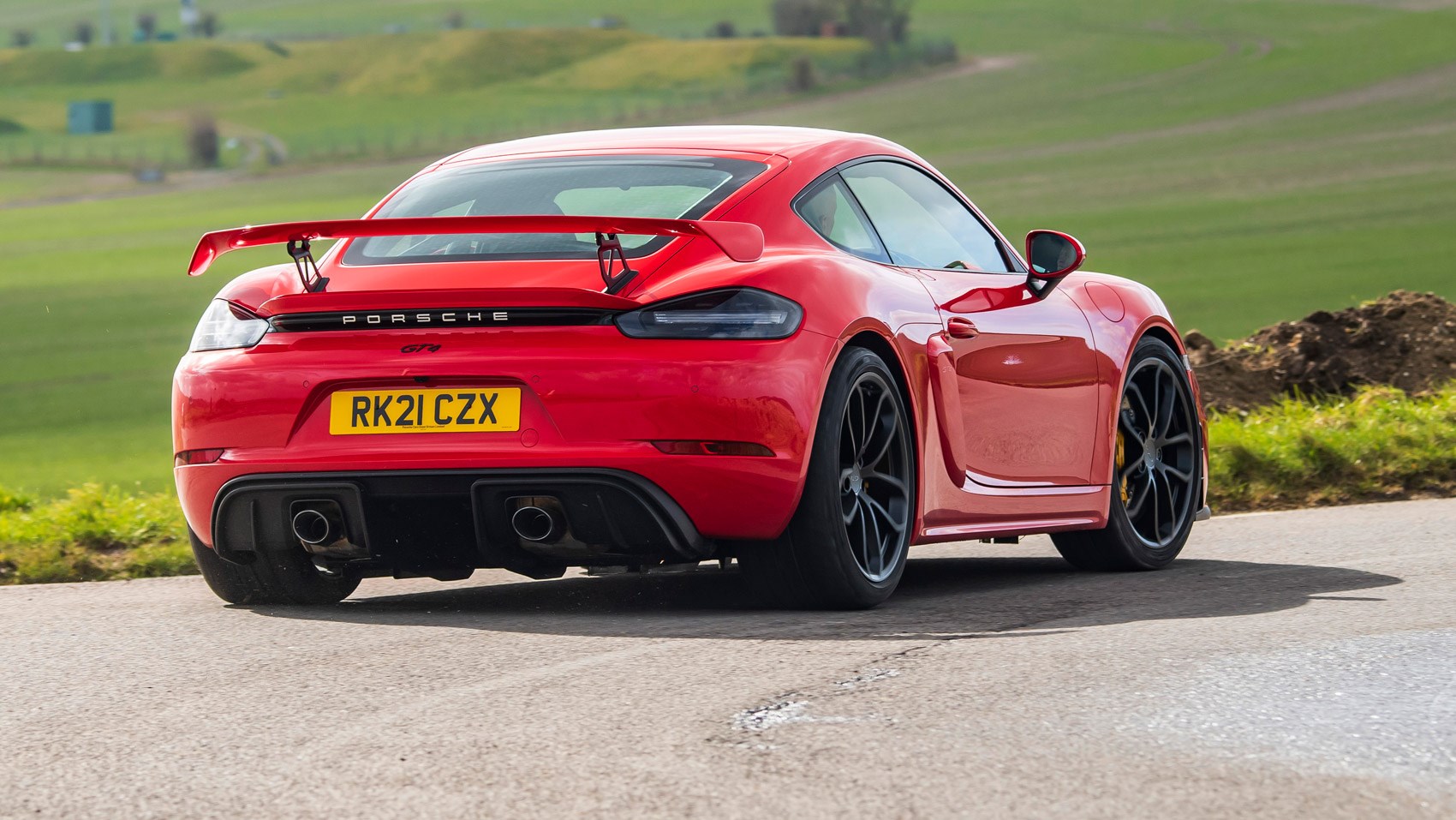
Our first experience of the GT4 was at Scotland's Knockhill Circuit, a short but daunting track full of blind corners, rollercoaster elevation changes and floaty crests. One particular unsighted uphill right requires you to commit to a line over a huge off-camber kerb, and simply hope the rest of the track is where you left it. Also, it had been raining on-and-off all day and we were chasing a professional driver in a 911 GT3.
It's high praise, then, to say that during our 20 or so laps the Cayman felt entirely on our side. The addition of carbon bucket seats and a fire extinguisher in the passenger footwell might hint at an intimidating drive, but after barely a lap it felt like an old friend – managing to make you feel like a massive hero, while feeding back ways to find more grip and speed. An uncanny combination.
Even more curious is the fact that this deep well of capability doesn't take away from the drama or the ability to thrill – the enjoyment coming not from the challenge of taming an unwilling machine but from being able to pick your line and take it time after time, knowing exactly how the car will react to your inputs. Something so predictable and well-honed should feel benign, but it doesn't.
Some of the old car's raw edges have been knocked off – the controls are lighter and the sound is more mellow. A switchable sports exhaust brings back some of the drama at low revs (the GT4 is sonorous higher up in either mode) and of course it sounds way more exciting than a four-cylinder Cayman, yet retains some of that motor's bass at low rpm. Best of all, it still feels suitably disgruntled and mechanical at tickover, hinting at an impatience to get going.
Is it still a manual?
Yes – hurrah! – but you can also spec a seven-speed PDK auto. The manual is still one of the sweetest shifts of its type on sale right now, and has a very useful auto blipper if your heel-and-toe game is weak, although this is easy to deactivate. All this makes it even more of a shame that you don't need to use the 'box very often – long gearing like the last GT4 allows 80mph+ in second and means you'll spend most of your time there or in third. Great on the track when you want to be concentrating elsewhere, we suspect not so much on the road where you want to be enjoying the incredible last few thousand rpm where the engine really comes to life.
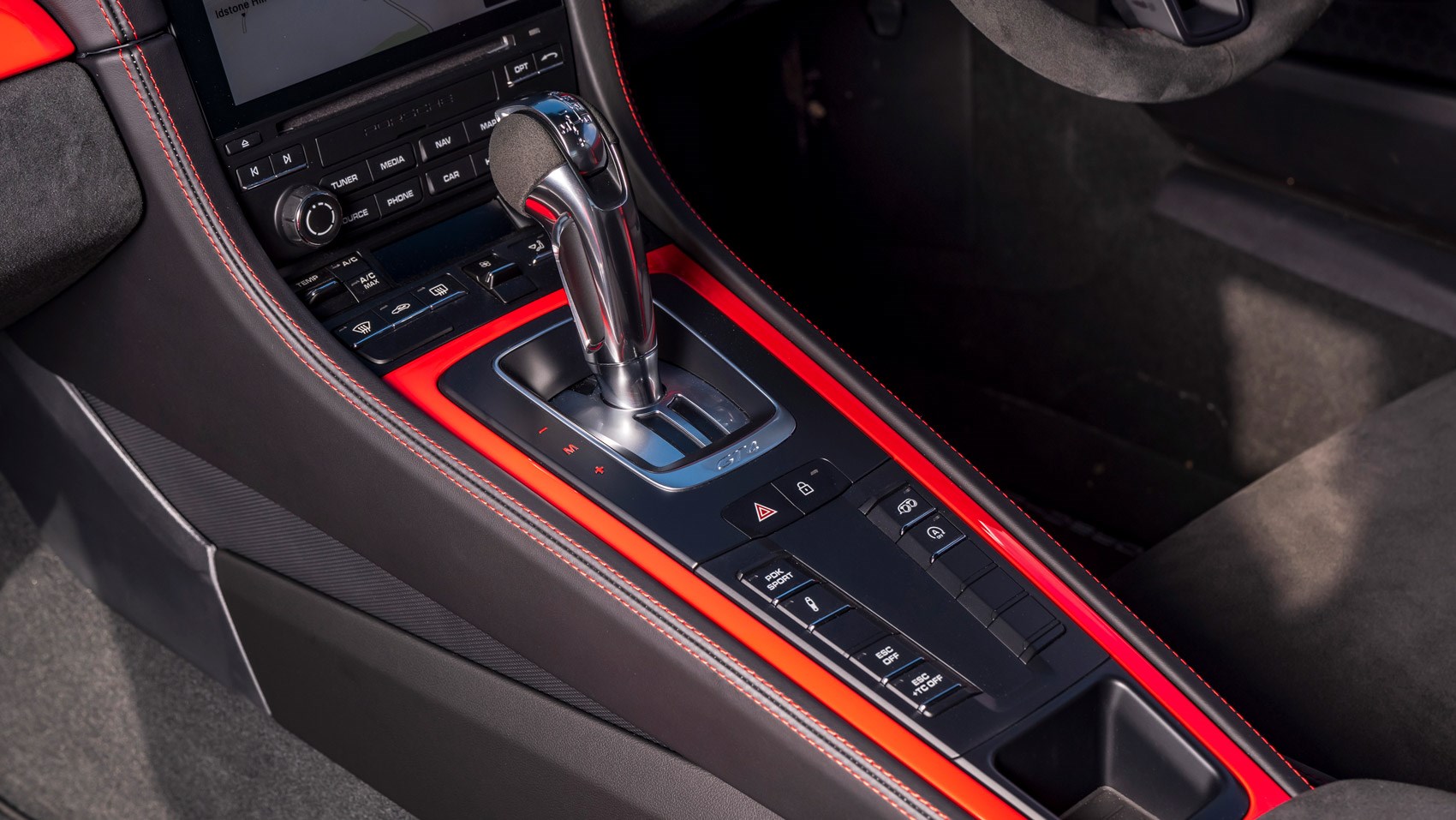
The PDK auto, meanwhile, has an extra gear compared to the manual. The ratios are shorter, particularly in first, second and third – allowing fourth to be an actually-usable-gear on a track or a feisty razz down a back road. Each shift is buttery smooth and instant, allowing you to play the revvy flat-six like a grand piano through the bends with ultimate ease. But the ratios still *feel* long. It means you have supreme adjustability in your throttle inputs – great for tweaking your line into a bend – but you quickly get into hyperdrive speeds in low gears on the road, so floor it with caution.
Both gearboxes have their own benefits and drawbacks, really. The manual is definitely the one to go for if you want maximum engagement from that epic engine, but the PDK auto shouldn't be discounted – its flexibility and slightly shorter gear ratios give it an easier-to-live-with edge.
We have one other complaint – we could have done with raising the beautifully compact (and round!) alcantara steering wheel about three millimetres higher. But basically, that's it.
Porsche Cayman GT4: verdict
You've probably worked this out already, but the latest 718 Cayman GT4 remains one of the most impressive and enjoyable road cars to drive you can buy right now, especially if you subscribe to the theory that less equals more, and value the way a car makes you feel rather than its outright speed.
Yes, a 911 GT3 offers even more drama and aptitude but it's nearly twice the cost and misses out on the smaller, mid-engined car's agility and simplicity. If you want something that puts you at the pure heart and soul of the driving process, whether on the road or track, at this price the new Porsche 718 Cayman GT4 is peerless.
Its biggest problem? The fact that this time around the Boxster Spyder shares its chassis and engine, but has no roof to get in the way of that six-cylinder soundtrack, and there's a barely noticeable compromise in performance. That's a car we have driven on the road and it was utterly sublime, so your decision just became much more complicated. Best get one of each to be safe. We won't judge.
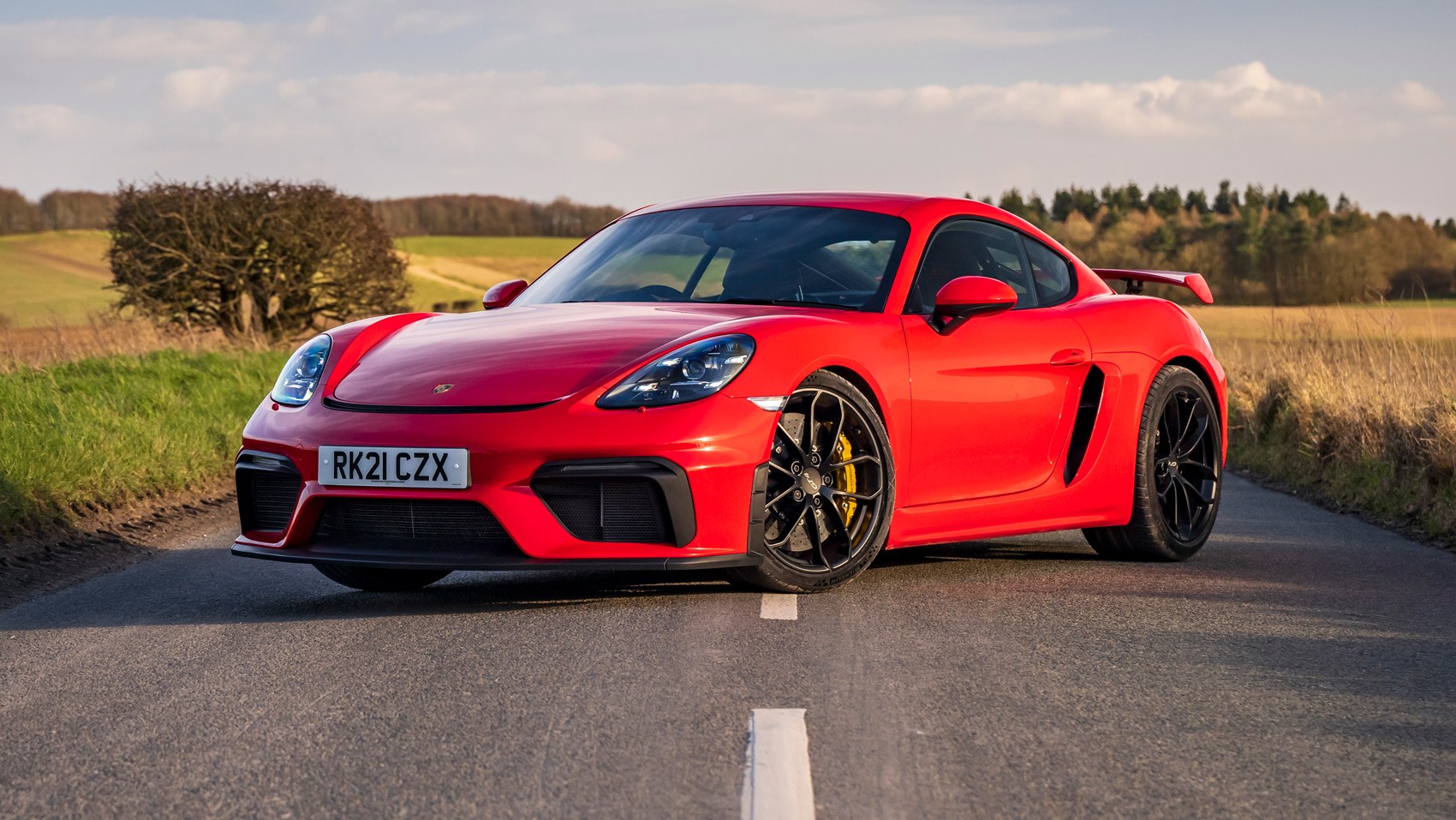
Source: https://www.carmagazine.co.uk/car-reviews/porsche/718-cayman-gt4/
